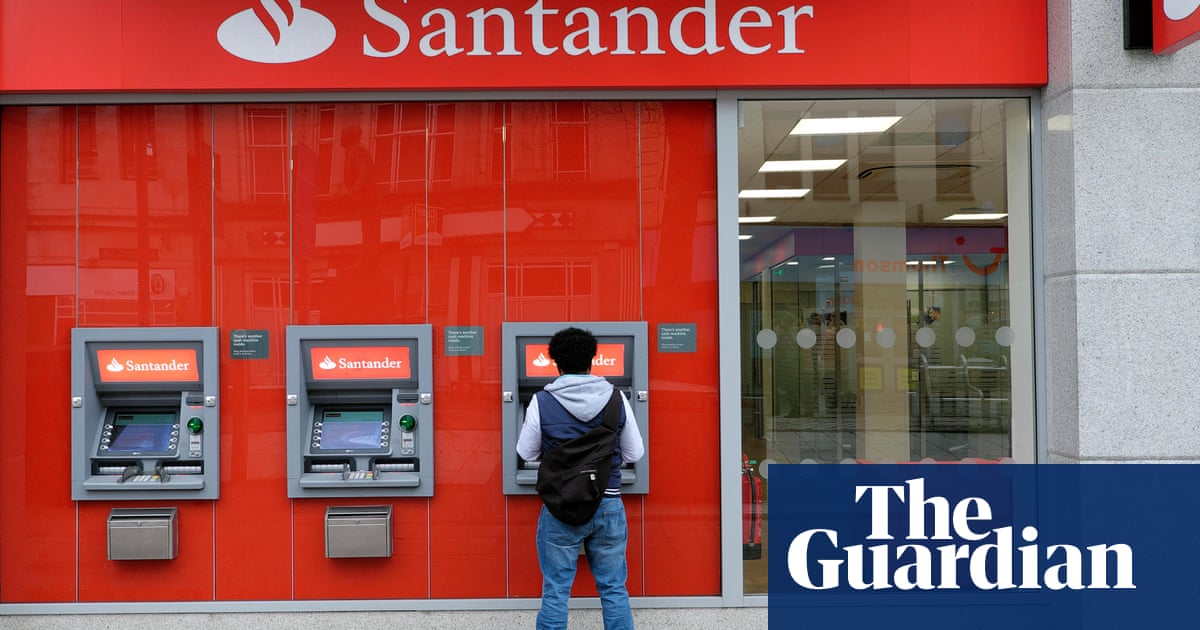Santander’s takeover of TSB will be music to Rachel Reeves’ ears: sparing the under-pressure chancellor the potential embarrassment of having to explain why a major high street lender had given up on Britain.
On Tuesday night, Spanish-owned Santander said it would buy TSB from its fellow Spanish owner, Sabadell, for £2.65bn, ending months of speculation over the future of the British bank – and reaffirming Santander’s commitment to the UK.
Rumours had emerged in January that Santander UK could pull out of high street banking, potentially reversing gains made in stepping up its British presence with the acquisition of Abbey National two decades earlier. Bosses had started slashing 2,000 jobs months earlier, fuelling speculation that it was trying to create a leaner business that could lure potential suitors.
The chatter sparked panic, feeding into a growing existential crisis over whether allegedly burdensome regulation was driving potential investment and foreign firms away from the City – which was already losing stock market listings and floats to foreign rivals .
Publicly, Santander repeated that the UK was a core market, with 14 million customers served through 350 branches and 18,000 staff. But in Madrid, executives led by executive chair Ana Botín, were said to be increasingly frustrated over UK regulations and costs that were dampening profitability.
That included post-financial crisis rules such as ring-fencing, which protect and separate consumer deposits from riskier operations including investment banking, but are criticised as costly and complex by banks. Meanwhile, Santander’s frustrations were compounded by the car finance commission scandal, which could lead to a £1.9bn compensation bill for the bank’s aggrieved borrowers.
Reeves and her Labour government, however, appeared alive to the threats.
Months earlier, the chancellor had ordered City watchdogs to do more to promote growth and competition, including by watering down financial crisis regulation that she claimed had “gone too far”. By late January, the chancellor was attempting to intervene in a supreme court case over the car finance scandal, concerned it could curb lenders’ activities.
Days after her intervention emerged, Reeves met with Botín on the sidelines of the World Economic Forum in Davos, Switzerland. While in the Swiss Alps, Botín declared: “We love the UK, it is a core market and will remain a core market for Santander. Punto [fullstop], that’s it.”
Speculation of its sale continued to swirl, but Santander finally put its money where its mouth is: agreeing to buy TSB from Spanish rival Sabadell in a deal that could eventually hit £2.9bn if the smaller bank’s profits meet forecasts.
For Santander, the takeover will help fend off competition from the likes of Nationwide Building Society, which has been nipping at the bank’s heels after its own £2.9bn acquisition of rival Virgin Money. It will add 5 million customers to its books, and make Santander the fourth largest mortgage provider and third largest bank in terms of personal current account deposits, behind Lloyds and NatWest.
But for TSB, the future of its 5,000 staff and 175 branches is at stake. Santander will have to consider how to strip out duplicate roles and branches and whether to scrap the 215-year history old TSB brand, which could disappear from UK high streets following the takeover.
Santander bosses told analysts on Tuesday night that they were aware of duplications, including “overlapping branches”.
Meanwhile, unions have been holding urgent talks with TSB to try to get some clarity for staff, who have been subject to a tumultuous 12 years, marked by ownership upheavals and a disastrous IT meltdown that tarnished its reputation for years.
Hived off from Lloyds Banking Group as part of state-aid rules following its £20.3bn government bailout in 2008, TSB again became a standalone brand and floated on the London stock exchange in 2014. It was delisted following its takeover by Spanish lender Sabadell in 2015, in a major cross border deal that the Treasury hailed as a “vote of confidence” in the UK.
But the party did not last. As soon as 2020, Sabadell began exploring a sale of TSB after the botched launch of a new IT system two years earlier sparked a tech meltdown, locking millions of customers out of their bank accounts. It caused a customer exodus, executive resignations, financial losses and a £48m fine from regulators.
Sabadell eventually swallowed the losses, and was heartened by TSB’s recovery, even rebuffing a £1bn approach by the Co-operative Bank in 2022.
It took a hostile bid for Sabadell by Spanish rival BBVA for the bank to reconsider a sale, with proceeds from TSB’s sale due to be distributed among shareholders who it hopes will see less benefit in agreeing to the takeover.
But Sabadell’s loss could be Santander’s gain, and provide a timely boost for Reeves as she fights to keep the trust of the City courted on the election campaign trail amid a gloomy economic outlook.
